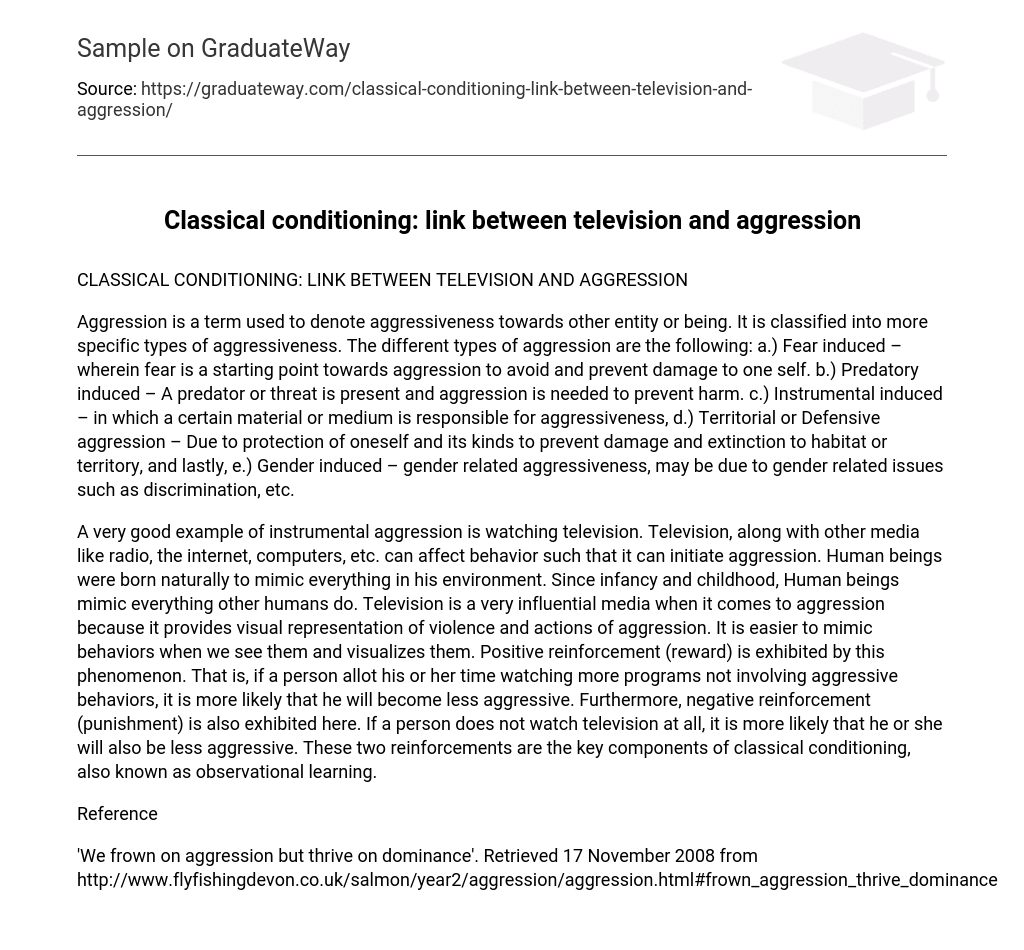Aggression is a term used to denote aggressiveness towards other entity or being. It is classified into more specific types of aggressiveness. The different types of aggression are the following:
a.) Fear induced – wherein fear is a starting point towards aggression to avoid and prevent damage to one self.
b.) Predatory induced – A predator or threat is present and aggression is needed to prevent harm.
c.) Instrumental induced – in which a certain material or medium is responsible for aggressiveness,
d.) Territorial or Defensive aggression – Due to protection of oneself and its kinds to prevent damage and extinction to habitat or territory, and lastly,
e.) Gender induced – gender related aggressiveness, may be due to gender related issues such as discrimination, etc.
A very good example of instrumental aggression is watching television. Television, along with other media like radio, the internet, computers, etc. can affect behavior such that it can initiate aggression. Human beings were born naturally to mimic everything in his environment. Since infancy and childhood, Human beings mimic everything other humans do. Television is a very influential media when it comes to aggression because it provides visual representation of violence and actions of aggression.
It is easier to mimic behaviors when we see them and visualizes them. Positive reinforcement (reward) is exhibited by this phenomenon. That is, if a person allot his or her time watching more programs not involving aggressive behaviors, it is more likely that he will become less aggressive. Furthermore, negative reinforcement (punishment) is also exhibited here. If a person does not watch television at all, it is more likely that he or she will also be less aggressive. These two reinforcements are the key components of classical conditioning, also known as observational learning.
Reference
- ‘We frown on aggression but thrive on dominance’. Retrieved 17 November 2008 from http://www.flyfishingdevon.co.uk/salmon/year2/aggression/aggression.html#frown_aggression_thrive_dominance





